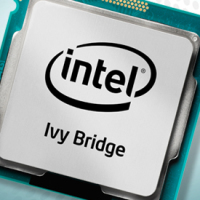Before you buy a laptop or think of upgrading your machine, normally you would take a piece of paper and jot down all the things you need to have in your laptop. For this you might search the Internet to find out the latest technologies that are being used in laptops, and the latest laptop deals or discounts, such as Dell coupons, to enjoy laptops with better performance and cheaper prices.
While doing so you will find that Intel’s third generation Ivy Bridge processors are widely adopted in mobile devices. Though these Ivy Bridge processors are not quite different from the company’s second generation Sandy Bridge processors, they do offer many appealing features that one should consider while making a purchase. In this article we will focus on a few things that one should know about Ivy Bridge processors.

1. Intel’s Ivy Bridge Processor Is a “Tick”
Intel uses the terms “tick” and “tock” for its new products each year. A “tock” is termed as an improvement in the architecture and a “tick” is termed as shrinking of the processor. Intel’s Ivy Bridge processor is a “tick” from the company as its size is reduced from Sandy Bridge’s 32nm size to 22nm. However, Ivy Bridge’s core architecture is the same as the Nehalem series that were introduced in 2008.
2. With Ivy Bridge You Can Enjoy All the Features of Sandy Bridge
It is very nice to hear that if you buy an Ivy Bridge processor, you can enjoy all the features that the Sandy Bridge processor offers. Or we can say that Intel has just extended its Sandy Bridge processors. One of the inspiring features of Sandy Bridge processors is turbo boosting.
Turbo boosting is a technique through which the processor’s clock rate can be increased if there is need for more processing and there is enough power supply and room to get heated. With the Ivy Bridge processor we can also enjoy Sandy Bridge’s famous Quick Sync Video.
This feature was added so as to increase the video transcoding speed. Other features include increased performance with support for caching data with SSDs. SSDs are highly efficient at storing and retrieving data, so this caching is very quick as compared with caching to an HDD.
Caching is normal and every processor does cache at different levels. This starts from Level 1 cache to the storage medium level cache. Caching makes the system stable. If you are using an SSD for storage-medium-level caching, then this will increase the speed of your computer.
3. Less Power Consumption with Tri-Gate Transistor Technology
Each new processor unveiled from Intel is more power efficient than its predecessors, which is not a hard and fast rule though. Sandy Bridge processors were more power efficient than their predecessors, similarly Ivy Bridge processors are more power efficient as compared to Sandy Bridge processors.
As processor technology is progressing we can see them making the best use of electric current. Ivy Bridge processors come with a new technology of Tri-Gate transistors. It is very hard to explain the whole Tri-Gate technology here but you can understand the concept that Tri-Gate transistor comes with three gates which doesn’t allow the current to “leak”, therefore, making them power efficient.
Before this, traditional two-dimensional transistors technology was used. Mobile devices like smartphones and laptops will have increased battery life because there will be less power consumed by the processors. In a test, the Ivy Bridge processor consumed much less power than Sandy Bridge due to Tri-Gate technology.
This makes Ivy Bridge a featured processor architecture for portable battery devices.

4. Support for Sandy Bridge Motherboards
If you have a laptop with a motherboard designed for the Sandy Bridge processor and you are thinking of upgrading to Ivy Bridge, then this is good news for you because Ivy Bridge processors support Sandy Bridge processor’s motherboard and vice versa.
Like Sandy Bridge, Ivy Bridge comes with a LGA1155 socket which makes both of the CPUs compatible on each other’s motherboard. When you are going to use the Ivy Bridge processor on the Sandy Bridge processor’s motherboard or vice versa, then you only need to update your motherboard’s BIOS to make it functioning.
5. Integrated Graphics Just Like Sandy Bridge, But Improved
It doesn’t sound cool when someone is heavily dependent on the integrated graphics chip (into the Sandy Bridge processor) for their heavy graphics need. This is because integrated graphics chip can’t compete with the performance of discrete graphics card. If you are going to use your machine for gaming purpose or 3-D modeling purpose, then you must go with a discrete graphics card.
Well, Sandy Bridge processors used to come with Intel HD Graphics like 2000 and 3000 with support for DirectX 10.1, but Ivy Bridge has improved support for graphics with Intel HD Graphics 2500 and 4000 along with DirectX 11 rendering. This is beneficial for the daily routine of work and basic computer graphics need, but not a professional approach.
Conclusion
Intel’s Ivy Bridge processors are hitting the stores, and laptops and ultrabooks are coming out with Ivy Bridge processors for improved performance and longer battery life. Before you buy a laptop, make sure that it has Intel’s 3rd generation Ivy Bridge processors so that you can enjoy better technology with improved features.
